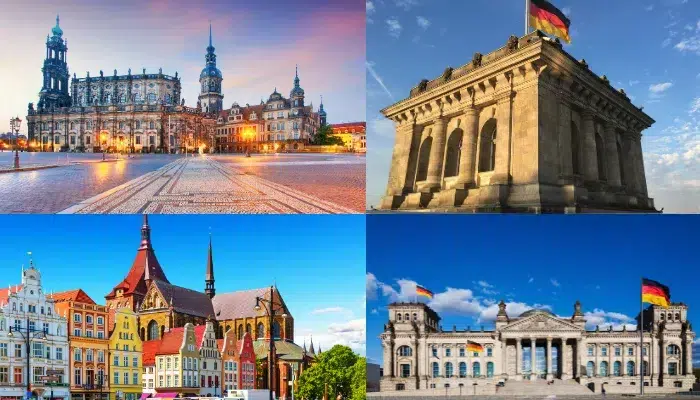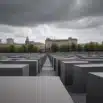Restaurants in Berlin
- Home
- Restaurants in Berlin
Restaurants in Berlin
Restaurants near tourist places in Berlin
About Berlin
Berlin, the vibrant capital city of Germany, is a melting pot of culture, history, and creativity. Explore the fascinating history of Berlin, from its origins as a small trading post to its division during the Cold War and eventual reunification in 1989.
Delve into the city’s rich cultural scene, from its world-renowned art galleries and museums to its thriving music and theater scene. Discover Berlin’s dynamic and diverse neighborhoods, each with its own unique history and character.
Top Tourist Places in Berlin, Germany
Berliner Dom, Berlin Germany
Brandenburg Gate
The Brandenburg Gate is an iconic historical landmark in Berlin, Germany, that has come to symbolize the tumultuous history of the city and the country as a whole. Built in the late 18th century as a symbol of peace and unity, the gate has witnessed centuries of political upheaval, from the rise of the Prussian Empire to the devastation of World War II and the division of East and West Berlin during the Cold War.
East Side Gallery
The East Side Gallery is a unique and vibrant outdoor art gallery located in Berlin, Germany. Stretching along a 1.3 km long section of the former Berlin Wall, it features over 100 murals painted by artists from around the world. Each mural tells a story of hope, freedom, and unity, reflecting the tumultuous history of the city and the triumph of the human spirit.
Friedrichstadt-Palast
The Friedrichstadt-Palast is a renowned theatre in Berlin, Germany, known for its spectacular shows and performances. With a rich history dating back to the 19th century, the Friedrichstadt-Palast has established itself as one of the premier entertainment venues in Europe. The theatre features a variety of productions ranging from traditional revues to cutting-edge contemporary performances.
Memorial of the Berlin Wall
The Memorial of the Berlin Wall is a powerful symbol of division and unity in Germany that led to the construction of the wall, its impact on the people of Berlin, and the emotional resonance it holds for those who lived through its existence. Experience the wall’s role in the Cold War and its ultimate fall, as well as its enduring legacy in contemporary German society.
Museum Island
Explore the rich history and cultural significance of Museum Island in the heart of Berlin, Germany. This UNESCO World Heritage site is home to five world-renowned museums, including the Pergamon Museum, the Altes Museum, and the Neues Museum. Delve into the fascinating artifacts and artworks housed within these institutions, spanning from ancient civilizations to modern art movements.
Pergamon Museum
The Pergamon Museum is one of the most significant archaeological museums in the world, located on Museum Island in Berlin, Germany. Discover an extensive collection of ancient artifacts, many of which were discovered during archaeological excavations in the Middle East. Explore the different sections of the museum, including the famous Pergamon Altar, Ishtar Gate, and Market Gate of Miletus.
Reichstag Building
The Reichstag Building is a historic landmark located in Berlin, Germany, renowned for its stunning architecture and historic significance serves as the seat of the German parliament, known as the Bundestag. The iconic building has a rich and tumultuous history, having been the site of significant events throughout Germany’s history.
The Holocaust Memorial
The Holocaust Memorial is one of the darkest chapters in human history serves as a powerful reminder of the consequences of hatred and intolerance during the atrocities committed during the Holocaust, which resulted in the systematic extermination of six million Jews and millions of others deemed undesirable by the Nazi regime.
Topography of Terror
The Topography of Terror in Berlin is also a reminiscence of the dark history of the atrocities committed by the Nazi regime in Germany which also served as the physical location of the former Gestapo headquarters and SS Reich Main Security Office. It serves as a reminder of the mechanisms of power and control used by the Nazis to perpetuate their reign of terror.














